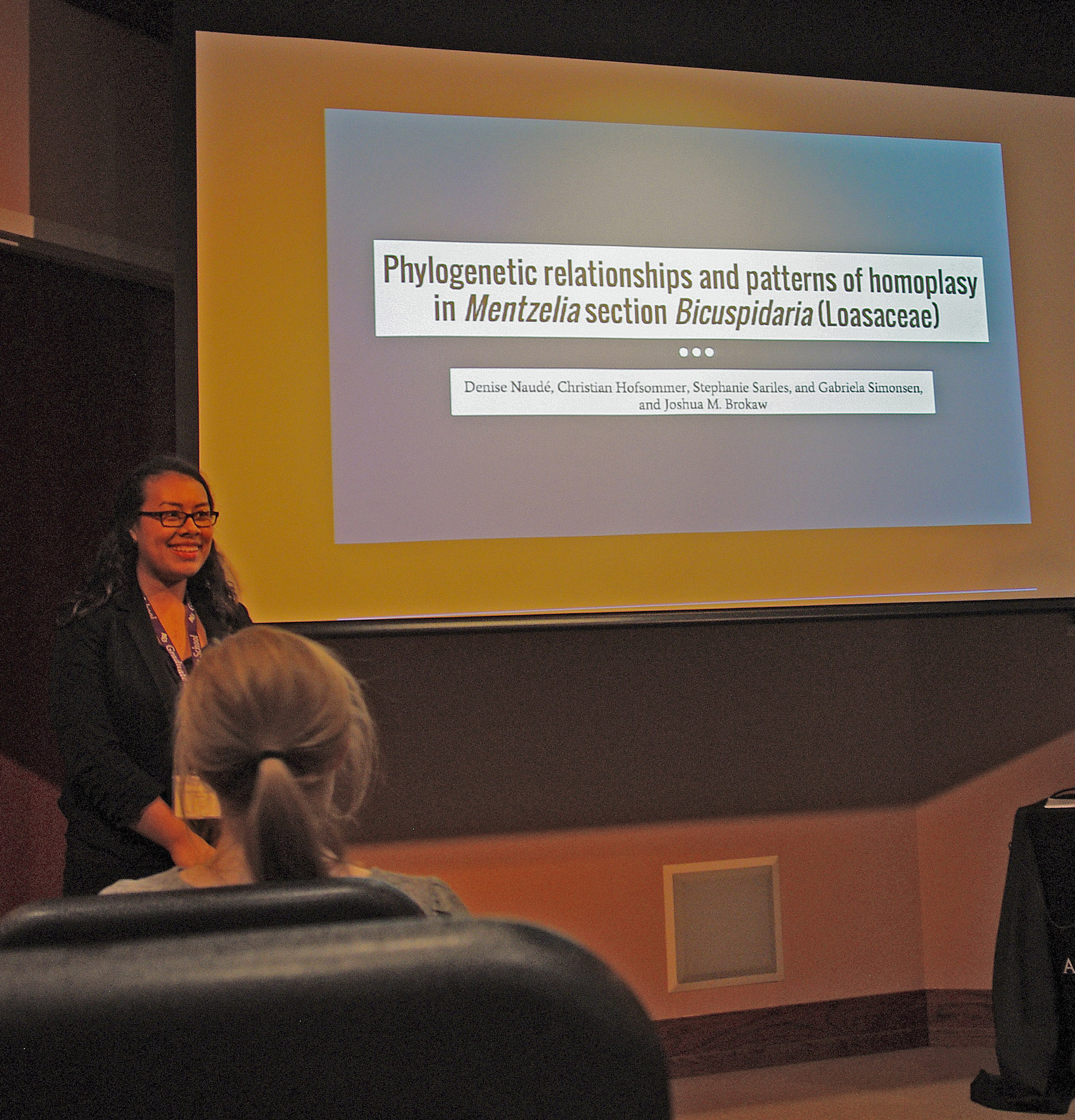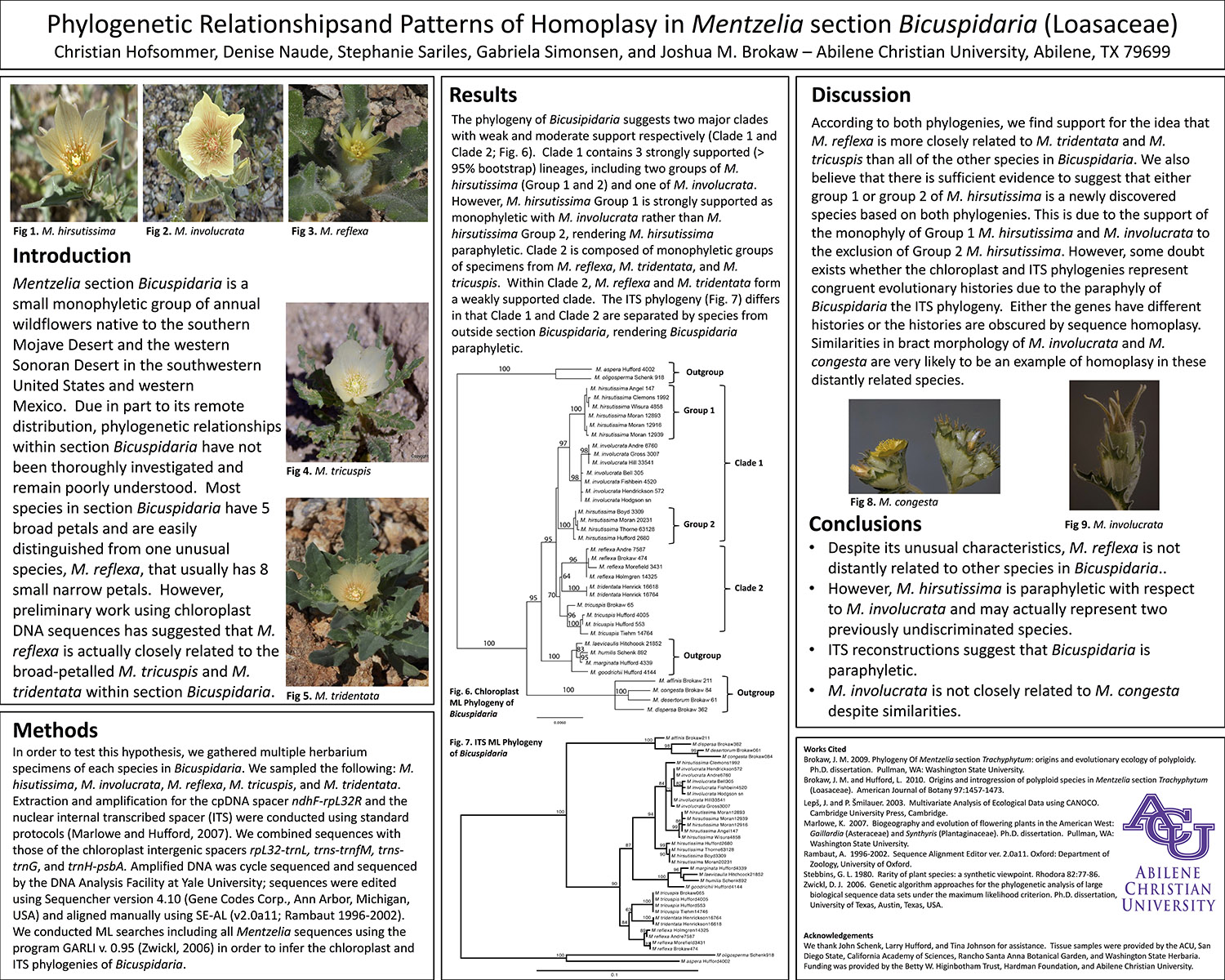Research did not cross my mind before coming to ACU because I didn’t enjoy labs in high school, so I wasn’t interested. However, my freshman year I had classes with several sophomores, who would often talk about the research they were doing. They made it sound intriguing and fun yet challenging, which was quite the opposite of my concept on research. As I walked by all the posters and different labs in the Foster Science Building (now known as Onstead Science), my curiosity grew, and, when Dr. (Josh) Brokaw sent an email for research applications, I signed up not really sure what I was getting myself in to. I was assigned to the Mentzelia research team, and I was extremely intimidated. I had no clue as to what Mentzelia was, which turned out to be a flowering plant, or the specific end goal for the research team. I showed up the first day of research completely clueless, but this is an aspect of research that I have grown to love. I started with little knowledge of my topic, but slowly developed skills and knowledge throughout the year. Most of the work that was done with the Mentzelia team was to run PCRs and gel electrophoreses because the end goal was to compare several Mentzelia species’ phylogenetic relationships and determine if there were any patterns of homoplasy (misleading similarities) in the DNA sequence data or morphology. I realized that patience was a key characteristic to acquire during research. As a team, we ran over 50 PCR reactions and gel electrophoreses with few positive results. It was frustrating, however, I was able to practice basic technique that has been valuable in my current research.
The end goal of any research is to be able to present your findings to an audience, and I had to give an oral presentation along with one of my team members. This was a hard task because most of our results were negative. Also, I did not believe that I had the knowledge to give a well-informed presentation, but with Dr. Brokaw’s guidance, we were able to develop a well-formed presentation. I still remember the question one of judges asked me, “Why is this research important?” I blanked. I was able to come up with a quick response, but I had not thought about the importance of the research that I was conducting before this moment.

I may still not completely understand the impact this research with the Mentzelia team had on plant biology, but I learned so much during my first year of participating in research. I learned that consistency, patience, and determination are key characteristics that are developed during lab work. I also learned that I enjoy research. I began clueless, and, by the end of the year, I was able to give an oral presentation over the information. The journey of research is exciting. The end results are unknown and anything can happen. This is why I decided to continue research.
I am now working with Dr. (Diana) Flanagan on the identification of unknown bacterial isolates from Sorcerer’s Cave. At first it seemed like this semester of research was going to be similar to my previous experience because the gel electrophoreses was negative or as a team we had inconsistent results. We had to use different methods to isolate DNA in addition to running new PCR reactions and gel electrophoreses. But after changes to the methods, we had positive results that could be sequenced, and we were able to present our findings to the ACU Biology Research Club at the fall research poster session. This research has been exciting because we are working alongside Dr. (Jennifer) Huddleston’s research teams, who are testing for antibiotic resistance in the same unknown bacterial isolates. It has been a good semester of research so far, but as a team, we hope to identify more unknown bacterial isolates before the ACU Spring Research Festival and the Texas ASM (American Society for Microbiology) Meetings. I am so glad I decided to join a research team, because it has been a rewarding experience that I would have not had doing any other extracurricular activity.

